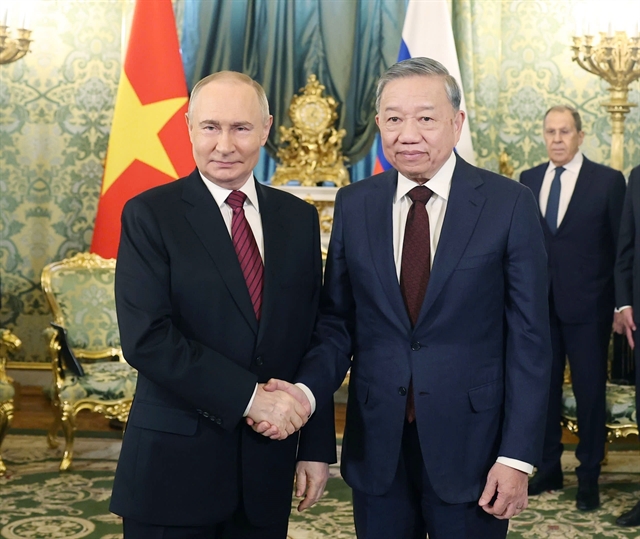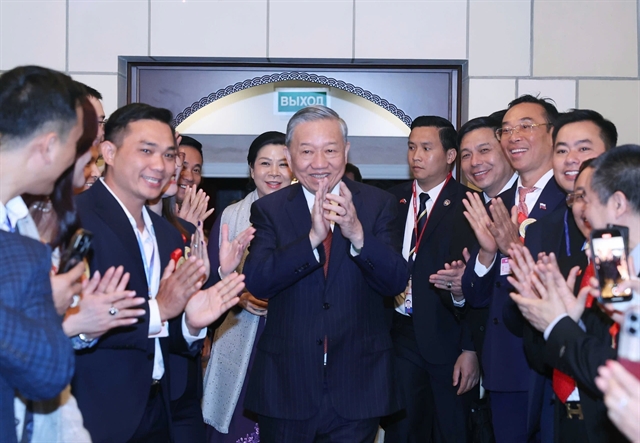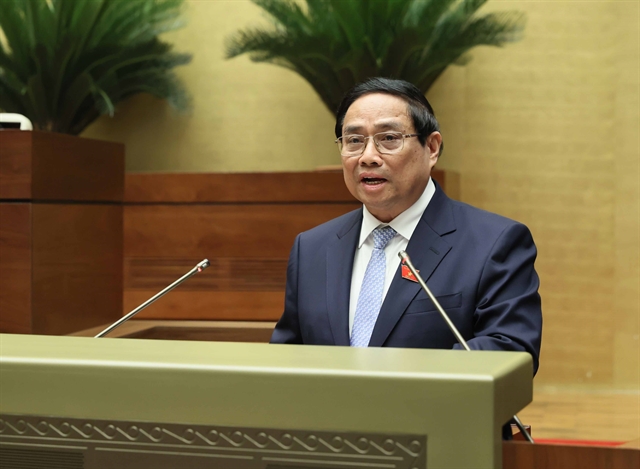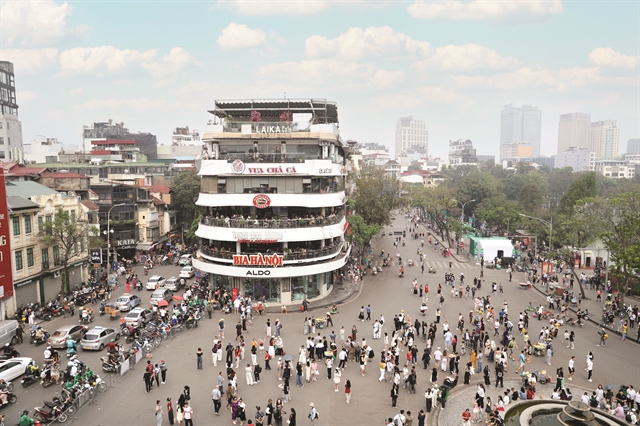 Sunday/Weekend
Sunday/Weekend

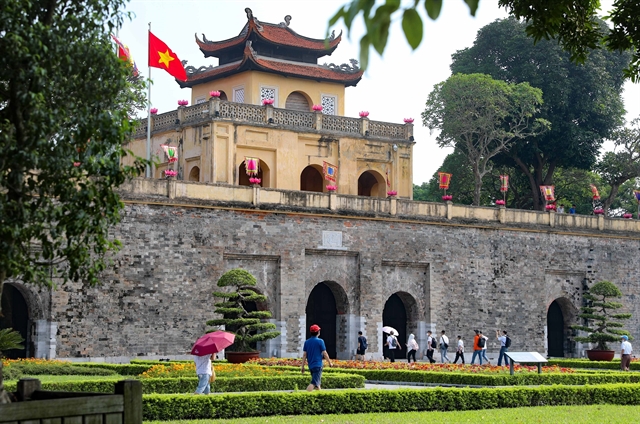 |
| RENOWNED RELIC: Thăng Long Imperial Citadel, the centre of regional political power for almost 13 consecutive centuries, was recognised as a UNESCO World Heritage Site in 2010. VNA/VNS Photo Thanh Tùng |
A series of archaeological excavations have been carried out at the Thăng Long Imperial Citadel since late 2002 and unearthed evidence from many millennia in Thăng Long – Hà Nội.
Excavations at the precious complex between 2002 and 2004 discovered various artefacts and architectural traces of various dynasties such as the Lý (1009-1225), the Trần (1225-1400) and the Nguyễn (1802-1884), paving the way for further research and conservation work.
The Thăng Long Imperial Citadel, the centre of regional political power for almost 13 consecutive centuries, was recognised as a UNESCO World Heritage Site in 2010, affirming its particular cultural, historical and architectural values.
Over the past two decades and 10 years since the UN culture agency's recognition, the values of the ancient citadel have been upheld through various activities.
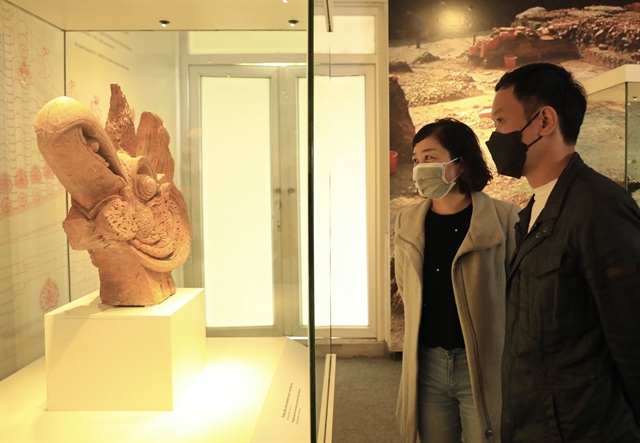 |
| ANCIENT ARTEFACT: Visitors view a pottery item unearthed and exhibited at Thăng Long Imperial Citadel. VNA/VNS Photo Hoàng Hiếu |
The conservation and restoration of architectural relics and archaeological sites within the citadel have been key concerns of both Hà Nội's authorities and its management body, the Thăng Long Hà Nội Heritage Conservation Centre.
The centre has cooperated with specialised agencies to preserve the existing architectural relics, including the archaeological site at 18 Hoàng Diệu Street, the relic of Đoan Môn (the Main Gate) and the relic of the esplanade of sacrifice to the Heaven and Earth that dates back to the early years of the Lý Dynasty. Maintaining the relics for research and tourism is also a top priority.
At the archaeological site on Hoàng Diệu Street, conservation work is carried out annually, such as anti-moss work, water drainage and elimination of harmful agents to preserve the site.
Specialists at the centre have also conducted on-site exhibitions while constantly analysing the environmental conditions, physical and mechanical properties, and chemical composition to determine the appropriate conservation methods.
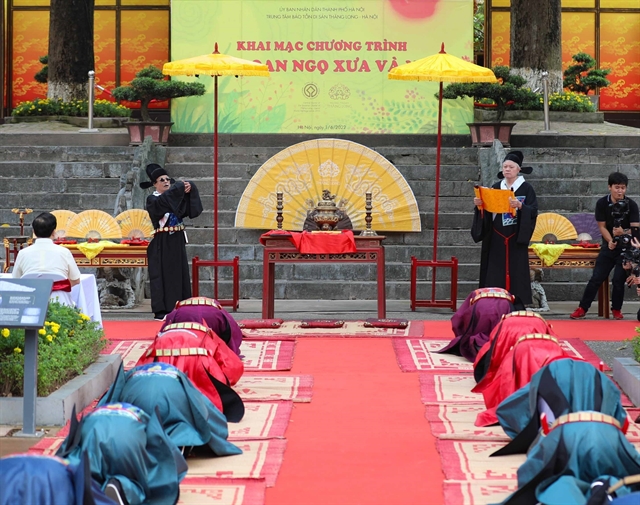 |
| RE-ENACTMENT: A royal ritual is carried out at Thăng Long Imperial Citadel, one of the activities to uphold the values of the relic site. VNA/VNS Photo Thanh Tùng |
According to the director of the conservation centre, Nguyễn Thanh Quang, one of the key projects to be implemented in 2021-2025 is conserving the Hoàng Diệu Archaeological Site and building an outdoor museum there.
Under the project, the centre has collaborated with experts from Belgium, France and Japan to consult experiences in conservation and assessment of environmental impact, as well as measures to preserve wooden relics at the excavated site.
Tomoda Masahiko, PhD, from the Tokyo National Research Institute on Cultural Heritage, said that Japan and Việt Nam had cooperated bilaterally to preserve the Thăng Long Imperial Citadel since 2006.
The first phase focused on the technical transfer of survey methods and conservation studies of the excavated artefacts at the remains of the ancient palace, mainly the foundations of the underground wooden buildings.
After that, the Japan Funds-in-Trust project, which began in 2010, focused on assessing the site through scientific research and identifying basic preservation methods.
The relic's values have also been promoted through exhibitions, field trips and, most recently, night tours, attracting many visitors.
Restoring the palace
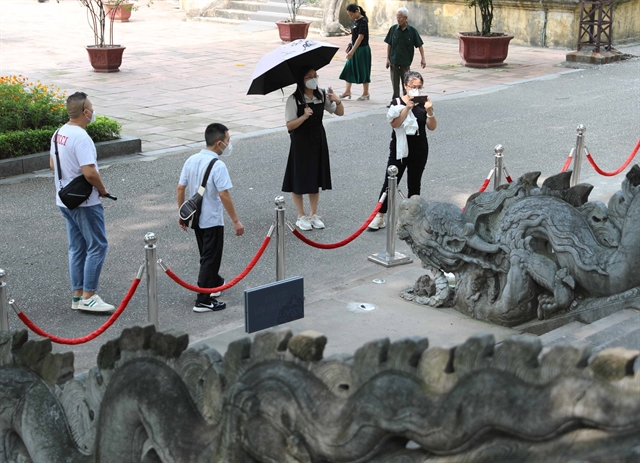 |
| LUCKY DRAGONS: Tourists are seen at the dragon staircase leading to Kính Thiên Palace. VNA/VNS Photo Thanh Tùng |
One concern of heritage managers and scientists is that the restoration of palace architecture in the Thăng Long Imperial Citadel relic site has stopped at the research phase after more than a decade of UNESCO recognition.
Many seminars have been held during which specialists have proposed restoring its original state.
They say the restoration is an urgent, meaningful and valuable duty.
After 20 years of excavating the Imperial Citadel (2002-2022), archaeologists have discovered architectural vestiges through various historical periods. The findings at its core and Kính Thiên Palace have offered an original basis for restoring the ancient palace architecture.
 |
HERITAGE TOURS: Visitors view an archaeological vestige in Thăng Long Imperial Citadel. VNA/VNS Photo Thanh Tùng |
Kính Thiên Palace, built during the Lê Dynasty, used to be of great significance where the court held solemn rituals, welcomed foreign emissaries and gave an audience to discuss state affairs. It is structured by three components: the Main Hall, Đan Trì courtyard and Đoan Môn (the Main Gate).
According to Tống Trung Tín, PhD, president of the Việt Nam Archaeological Association, results of archaeological surveys and research on some ancient documents have revealed that the vestiges of Kính Thiên Palace are very few and have been repaired in different periods.
Some studies also show that the main space of Kính Thiên Palace might be even grander than that of Thái Hòa Palace, one of the most important constructions in Huế Imperial City, constructed in 1805.
A specialist concerned with the restoration of palace architecture, Nguyễn Văn Sơn, PhD, stressed the necessity of speeding up the research in archaeology, history, architecture and fine arts to accumulate information as a foundation for the restoration of Kính Thiên Palace.
"First of all, it is necessary to clarify the foundation and scale of the structure of Kính Thiên Palace's Main Hall, which could be done with the excavations conducted within the area, including Long Trì Đan Trì courtyard, the Dragon staircase, the area surrounding the N23, N26, N31 and N26 buildings," he said.
"Its form, design, materials, functions and building technique also need to be further studied to envision the artistic, historical and social elements related to the ancient palace.
"If the studies are carried out continuously for three to five years, hopefully, Kính Thiên Palace could be restored within ten years."
Scientists also believe that the main source of Vietnamese culture was not restored until the ancient palace's revival.
Hà Nội's culture authority continues to research and develop a plan to resume the original state of the Thăng Long Imperial Citadel and turn it into an attractive destination for domestic and foreign tourists to the capital.
Associate Professor Trần Đức Cường, chairman of the Việt Nam Association of Historical Sciences, said: "Work will be sped up soon thanks to the attention paid by Hà Nội's authorities and the Ministry of Culture, Sports and Tourism." VNS


